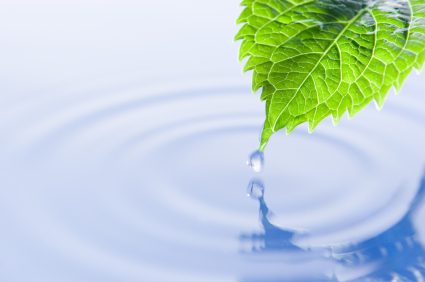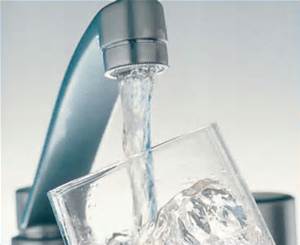
Water Health Risks-What You Need To Know
This Topic Covers:
Chlorine hazards in tap water and shower
water; What you should know about your bottled water; Filtering your water
and the steps you should take before you purchase a water filter. How to
disinfect your water in case of a public emergency. Find answers,
remedies and solutions in this topic.
Introduction
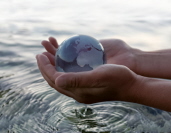
Retrieved From
www.epa.gov - Environmental
Protection Agency
EPA
encourages all Americans to learn more about the quality of their drinking
water, both tap water and bottled water , before deciding whether to drink tap water,
bottled water, or both. If your water comes from a public water system, the best
way to learn more about tap water is to read your water supplier’s annual
water quality report. If your water comes from a household well, EPA recommends
testing the water regularly for bacteria, nitrates, and other contaminants. The
best way to learn more about bottled water is to read its label, or contact the
producer directly.
www.environmentalpollutioncenters.org reports,
According to some estimates, every year few millions of Americans are
sickened by polluted water. Water pollution involves the pollution of
surface waters and/or groundwater which may cause a series of diseases
referred to as water
pollution diseases. These could have
serious health impacts. While we can control (to some extent) the water we
drink, the pollution of our water streams may have long-term effects by
reducing the “drinkable” water reserves of our planet. Additionally, the
common filtration methods for water are not efficient for some of the new
emerging contaminants – which are many times not tested for either. Water
pollution travels slower than air pollution but still may affect large
areas.
top
The Importance of Water
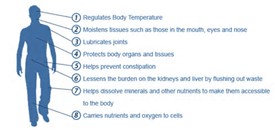
Reference Source -
www.urmc.rochester.edu
Need a reason to drink water? Water is essential to
good health—and life. Up to 60 percent of an adult’s body weight and about
74 percent of a newborn’s body weight is water, making it the largest single
substance in the human body. Here's what water does for you:
-
It helps carry nutrients to all the cells in your
body.
-
It helps carry waste products from the cells.
-
It is a part of essential reactions within the
body.
-
It helps regulate body temperature by absorbing
heat generated by your metabolism and eliminating excess heat through
sweating.
It helps with digestion of food.
It helps lubricate your joints.
Your body must balance the amount of water lost with
the amount it gets from food and beverages. About 80 percent of the water
you take in comes from the water and beverages you drink; the remaining 20
percent comes from food. A small amount of water also is produced when your
body metabolizes foods.
How much water do you need? That depends on your age,
percent of body fat, general health, diet, temperature of the air around you
and your level of activity. You lose water through urine, sweat, feces, and
the air you exhale.
The Institute of Medicine (IOM) suggests that the
average healthy woman drink about nine cups a day of liquids, and the
average man about 13 cups a day.
www.globalhealingcenter.com
© Copyright
We all know that water is the magic elixir of life.
Every living organism needs water in order to function properly. And, you
don't need any other liquid to survive. After all, it's the liquid that
makes up 70% of our body mass-pure water. Your body relies on water to
digest food and to expel waste.
The amount of water is important: Dr. Group recommends
that you drink eight 8-ounce glasses daily. And the quality of water you
drink matters too. With all the toxic chemicals that can be present in
public water supplies, as well as bottled water, it's best if you drink
purified water.
Water contains many of the nutrients that make us
health and keep us alive. Unfortunately, some chemicals in water are also
dangerous. Most of these excess chemicals in water are "runoffs", or
leftover human materials.
top
Alarming Statistics
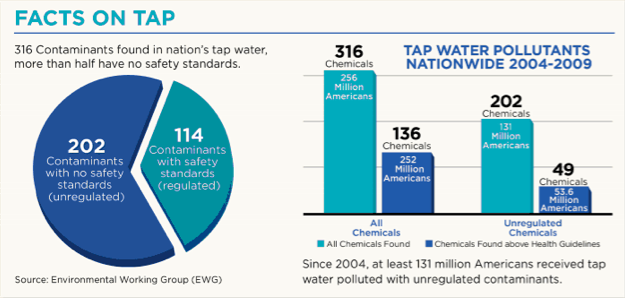
www.nrdc.org - © Natural Resources Defense Council
While
it is true the United States has some of the best drinking water in the
world, a disturbing new report conducted by the New
York Times revealed
that one in ten Americans have been exposed to drinking water that contains
dangerous chemicals, including carcinogens in the tap water of major
American cities and unsafe chemicals in drinking water wells in more rural
areas. The primary reason, according to the report: the laws intended to
protect our water supplies, the Clean Water Act and the Safe Drinking Water
Act, are not being enforced. In fact, researchers found, barely 3 percent of
violations resulted in fines or other significant penalties by state
officials responsible for enforcing the law...
While we reasonably may choose to use bottled water for convenience, taste,
or as a temporary alternative to contaminated tap water, it is no long-term
national solution to this problem. Bottled water
sometimes is contaminated, and we
don't use it to bathe, shower, etc. -- major routes of exposure for some tap
water contaminants. A major shift to bottled water could undermine funding
for tap water protection, raising serious equity issues for the poor.
Manufacture and shipping of billions of bottles causes unnecessary energy
and petroleum consumption, leads to landfilling or incineration of bottles,
and can release environmental toxins. The long-term solution to our water
woes is to fix our tap water so it is safe for everyone, and tastes and
smells good.
www.allaboutwater.org
Copyright © All About Water.org
“An
estimated
25 percent or more of
bottled water is really just tap water in a bottle—sometimes
further treated, sometimes not.”
Retrieved From -
www.chlorinefreeproducts.org
THE WASHINGTON POST:
"The EPA has raised skin absorption of
chlorine to its top 10 carcinogen watch list."
June 1994
[Skin absorption of chlorine occurs in your shower, bathtub, swimming pool
and spa. -- Unless you have a Point of Entry (POE) system to remove all
toxins before they enter your property.]
top
Answers to Questions
Concerning Your Water
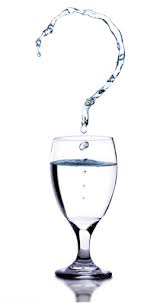
safewater.supportportal.com
Find answers to the most frequent asked questions
concerning your water. The Knowledge Base has 597 support references,
created by support professionals who have resolved issues for our customers.
It is constantly updated, expanded, and refined to ensure that you have
access to the very latest information.
top
How Safe Is Public Water?
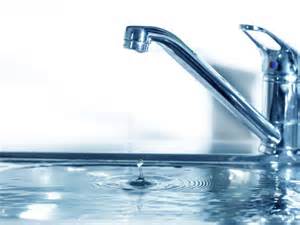
www.greenamerica.org
-
© Green
America
Under the
Safe Water Drinking Act, the US Environmental Protection Agency (EPA) is
responsible for setting national drinking water standards. The EPA regulates
over 80 contaminants—including arsenic, e-coli, cryptosporidia, chlorine,
and lead—that may be found in drinking water from public water systems.
While the EPA says that 90 percent of US public water systems meet its
standards,
you may want to use a water filter to further ensure your water’s
safety.
A 2003 study by the
nonprofit Natural Resources Defense Council (NRDC) found that due to a
combination of pollution and deteriorating equipment and pipes,
the public
water supplies in 19 of America’s largest cities delivered drinking water
that contained contaminant levels exceeding EPA limits (either legal limits
or unenforceable suggested limits) and may pose health risks to some
residents. So even though it may test fine at its source, public water may
still pick up contaminants on the way to your house.
Contaminants that
sneaked into city water supplies studied by the NRDC include rocket fuel,
arsenic, lead, fecal waste, and chemical by-products created during water
treatment.
“Exposure
to the contaminants [sometimes found in public and private drinking water]
can cause a number of health problems,
ranging from nausea and stomach pain to developmental problems
and cancer,”
notes Physicians for Social Responsibility (PSR) in its booklet, Drinking
Water: What Health Care Providers Should Know. PSR estimates that up to
900,000 people get sick and 900 die in the US per year from contaminated
public and private drinking water. Despite the problems with public water,
it’s still just as safe as bottled water, despite the billions of dollars
beverage companies spend to make you think bottled is better.
www.cdc.gov
The United States has one of the safest public drinking
water supplies in the world. Over 286 million Americans get their tap water
from a community water system (1).
The US Environmental Protection Agency (EPA) regulates drinking water
quality in public water systems and sets maximum concentration levels for
water chemicals and pollutants.
Sources of drinking water are
subject to contamination and require appropriate treatment to remove
disease-causing contaminants. Contamination of drinking water supplies can
occur in the source water as well as in the distribution system after water
treatment has already occurred. There are many sources of water
contamination, including naturally occurring chemicals and minerals (for
example, arsenic, radon, uranium), local land use practices (fertilizers,
pesticides, concentrated feeding operations), manufacturing processes, and
sewer overflows or wastewater releases.
The presence of contaminants in water can lead to
adverse health effects, including gastrointestinal illness, reproductive
problems, and neurological disorders. Infants, young children, pregnant
women, the elderly, and people whose immune systems are compromised because
of AIDS, chemotherapy, or transplant medications, may be especially
susceptible to illness from some contaminants.
Top 10 Causes - Outbreaks in
Public Water Systems*
For a complete listing of water-related
surveillance data, see CDC’s Surveillance
Reports for Drinking Water-associated Disease & Outbreaks
top
Health Effects of
Drinking Water Contamination
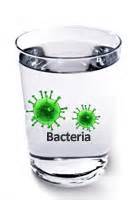
www.ncbi.nlm.nih.gov
While the most common water pollution diseases involve poisoning episodes
affecting the digestive system and human infectious diseases, water
pollution may cause a large variety of health diseases including:
- Infectious diseases caused by pathogens (usually microorganisms)
from animal fecal origins, of which the most common occur in developing
countries involving:
-
- Typhoid
-
- Giardiasis
-
- Amoebiasis
-
- Ascariasis
-
- Hookworm
- Diseases caused by polluted beach water including:
- - Gastroenteritis
- - Diarrhea
- - Encephalitis
- - Stomach craps and aches
- - Vomiting
- - Hepatitis
- - Respiratory infections
-
Liver damage and even cancer (due to DNA damage)
– caused by a series of chemicals (e.g., chlorinated solvents, MTBE)
-
Kidney damage caused by a series of chemicals
-
Neurological problems - damage of the nervous
system – usually due to the presence of chemicals such as pesticides
(i.e., DDT)
-
Reproductive and endocrine damage including
interrupted sexual development, inability to breed, degraded immune
function, decreased fertility and increase in some types of cancers –
caused by a series of chemicals including endocrine disruptors – which
-
Thyroid system disorders (a common example is
exposure through perchlorate which is a chemical contaminating large
water bodies such as Colorado River)
-
Increased water pollution creates breeding grounds
for malaria-carrying mosquitoes killing 1.2-2.7 million people a year
A series of less serious health effects could be
associated by bathing into contaminated water (i.e, polluted beach water)
including:
-
Rashes
-
Ear aches
-
Pink eyes
Water pollution can affect us:
-
Directly – through
consumption or bathing in a polluted stream (that involve consumption of
municipal water, as well as bathing in polluted lakes or beach water).
-
Indirectly – through the consumption of vegetables
irrigated with contaminated water, as well as of fish or other animals
that live in the polluted water or consume animals grown in the polluted
water. This is many times more dangerous than being directly affected
through consumption of water because some pollutants bioaccumulate in
fish and living organisms (their concentration in fish could be several
orders of magnitude higher than their water concentration). Additionally
the toxins from the brown tide are strong and can travel via air
affecting homeowners close to the beach.
top
Tap Water Precautions
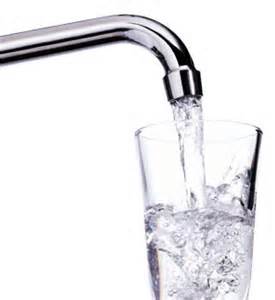
www.epa.gov
– Environmental Protection Agency
Some
people may wish to take special precautions with the water they drink. In
particular, people
with immune systems that are weakened by AIDS, chemotherapy or transplant medications are
more vulnerable to microbial
contaminants in drinking water such as Cryptosporidium.
Cryptosporidium
is a microscopic parasite that lives in the intestine of infected animals
and humans. It passes in the stool in its dormant oocyst form. The oocyst is
protected by an outer shell that allows it to survive outside the body for long
periods of time and makes it very resistant to chlorine-based disinfectants. It
occurs mainly in surface water sources, such as lakes, streams and rivers. In
healthy adults, Cryptosporidium can cause illness, but for
people with weakened
immune systems, it can
cause severe illness and even death. Those who wish to take extra measures to avoid waterborne
cryptosporidiosis can bring their drinking water to a boil for a full
minute.
Boiling water is the most effective way of killing Cryptosporidium. As an
alternative
to boiling water, people may
take the following measures:
Use a
point-of-use filter: Consider using point-of-use (personal use, end-of-tap,
under sink) filters that remove particles one micrometer or less in diameter.
Filters that use reverse osmosis, those labeled as “absolute one micron
filters,” or those labeled as certified by an American National Standards
Institute (ANSI) -accredited organization to ANSI/NSF Standard 53 for “Cyst
Removal” provide the greatest assurance of removing Cryptosporidium. As
with all filters, follow the manufacturer’s instructions for filter use and
replacement.
Use bottled water:
Check the label or call the bottler to find out how bottled water is treated. The
following bottled water treatments protect against Cryptosporidium: reverse
osmosis, distillation, ultraviolet light, or filtration with an absolute
one-micron filter. Bottled waters derived from protected well and spring
water sources are less likely to be contaminated by Cryptosporidium
than those containing untreated municipal drinking water from less protected
sources such as rivers and lakes.
Those who choose to take these precautions should remember
that they can be exposed to waterborne pathogens through water used for brushing
teeth, making ice cubes, and washing fruits and vegetables – not just through
water they drink.
EPA encourages all Americans to learn more about the quality of their
drinking water, both tap water and bottled water, before deciding whether to
drink tap water, bottled water, or both. If your water comes from a public water
system, the best way to learn more about tap water is to read your water
supplier’s annual water quality report. If your water comes from a household
well, EPA recommends testing the water regularly for bacteria, nitrates, and
other contaminants. The best way to learn more about bottled water is to read
its label, or contact the producer directly.
top
Search to See About Your
Local Water Quality

www.foodandwaterwatch.org
- © Food & Water Watch
Check to See If Your State Is Listed
- Why your state needs a national clean water trust fund:
When a resource is as basic as clean water, it can
be easy to take for granted. Flowing in and out of our homes and businesses
through underground pipes, clean water for sanitation keeps our communities
livable, our lifestyles possible, and our industries viable. But while
steady access to clean water is a cornerstone of modern society, its future
is far from secure.
As recent tragedies have shown, the United States
national infrastructure is experiencing the consequences of decades of
neglect. Our water systems, many of which are more than 100 years old, are
no exception.
Fiscal 2007 saw the Clean Water State Revolving Fund
funded at some of the lowest levels in history, and for 2008 the president
has requested states be given a mere $688 million, the lowest levels since
the program‚ inception.
Clear Waters: Why America Needs a Clean Water Trust Fund will
examine trends in clean water spending on a state-by-state level, pointing
out the need for urgent action while explaining the benefits that could be
achieved through the establishment of a clean water trust fund.
DOWNLOAD THE PDF
top
Drugs Pollute Our Water Supply

Content
provided from
Life
Extension.org (Death by Medicine Report)
We have reached the point of saturation with prescription
drugs. Every body of water tested contains measurable drug residues. The tons of
antibiotics used in animal farming, which run off into the water table and
surrounding bodies of water, are conferring antibiotic resistance to germs in
sewage, and these germs also are found in our water supply.
Flushed down our
toilets are tons of drugs and drug metabolites that also find their way into our
water supply. We have no way to know the long-term health consequences of ingesting
a mixture of drugs and drug-breakdown products. These drugs represent
another level of iatrogenic disease that we are unable to completely measure.66-74.
To read the entire report…www.lef.org
top
Rocket
Fuel In Water
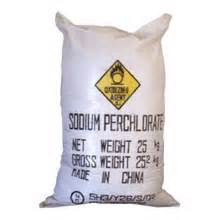
www.cdc.gov
- factsheets - perchlorate
Sources of
Perchlorate and How are People Exposed
- Perchlorate
is a chemical most commonly used in rocket fuel. The chemical is also used
in explosives and fireworks. A combination of human activity and natural
sources has led to the widespread presence of perchlorate in the
environment.
- People
are exposed to perchlorate by drinking water or eating food containing
perchlorate or by working in the manufacture of products containing
perchlorate.
www.atsdr.cdc.gov
Perchlorate has been found in food,
including
cow’s milk, and in water. Human exposure to perchlorate is expected
to occur through the ingestion of food and milk. The Food and Drug
Administration (FDA) recently estimated that the US population ingests from
0.08-to 0.39-μg/kg/day perchlorate from food items.
Human exposure to perchlorate also can occur
through the ingestion of water, as it has been found in drinking water
supplies, tap water samples, and groundwater at some locations.
Efforts are being made to determine the relative contribution of perchlorate
from food and water.
Sources of perchlorates
include rocket fuel, flares, gunpowder, temporary adhesives, electrolysis
baths, batteries, drying agents, etching agents, oxygen generating systems,
matches, chlorine and chlorine based cleaners, and pool chlorination
chemicals.
Toxicokinetics
-
(The
description of what rate a chemical will enter the body and what
happens to it once it is in the body:
-
Perchlorate appears to be readily absorbed by the digestive
system after oral exposure and enters the bloodstream within a few hours of
ingestion.
-
Perchlorate
is rapidly taken up into the thyroid gland by an active transport mechanism.
-
Perchlorate
does not appear to be modified in the body, either by degradation or covalent
binding.
-
Perchlorate
is rapidly eliminated from the body in the urine with half-times of
approximately 8-12 hours in humans.
However,
recent studies have shown widespread exposure to low levels of perchlorate by
the general population, so exposure may be frequent.
top
Health
Risks from Perchlorate
www.cfsan.fda.gov
Human exposure to
sufficiently high doses of perchlorate may disrupt how the thyroid gland
functions. In adults, the thyroid plays an
important role in metabolism, making and storing hormones that help regulate
the heart rate, blood pressure, body temperature, and the rate at which food
is converted into energy. In fetuses and infants, thyroid
hormones are critical for normal growth and development of the central
nervous system. Perchlorate can interfere with the human body's ability to
absorb iodine into the thyroid gland which is a critical element in the
production of thyroid hormone.
www.atsdr.cdc.gov
Exposure of people to excessive amounts
of perchlorate for a long time may lower the thyroid activity, leading to a
condition called hypothyroidism. The prevalence of
hypothyroidism is about 5% in the general population of the United States, but
there is no evidence that any of this percentage is due to perchlorate exposure.
Because thyroid hormones play a critical
role in the neurological development of the fetus, there is concern that
hypothyroidism (maternal and fetal) during pregnancy could result in neurodevelopment
effects...
Children’s
Health
Risks
The most sensitive population is fetuses of
pregnant women who might have hypothyroidism or iodide deficiency.
Infants and developing children may be more
likely to be affected by perchlorate than adults because thyroid hormones are
essential for normal growth and development.
www.cfsan.fda.gov
Should I be worried
about reconstituting my child’s infant formula with tap water?
EPA is issuing its
interim
health advisory for perchlorate to assist state and local officials in
addressing local contamination of drinking water supplies from perchlorate. If
you live in one of the few areas where perchlorate in the public drinking water
is at levels above 15 parts per billion, FDA recommends using water that is
lower in perchlorate levels, such as bottled water or water from a home
treatment device certified for perchlorate
removal, to reconstitute your infant's formula.
top
www.nrdc.org - © National Resources Defense Council
Whether your water is safe or contaminated depends on several factors: its
source, what if any treatment it receives;
and the quality of the pipes in your home. Follow these simple steps to check out the quality of your water:
* Find out
about your water system. The
U.S. Environmental Protection Agency regulates the community water systems
that supply drinking water to most Americans. Every water system is required
to publish a yearly “consumer confidence report” detailing contaminants or
violations of water quality standards. You can see the report for your water
system by contacting the system directly. To find your water system, visit
EPA's water
systems directory.
* Have water from your own well tested. Wells,
which are not typically regulated by the SDWA, are more likely to contain
contaminants than municipal water systems. The E.P.A. advises that you test
well water annually, especially if you see signs of trouble like corroded
pipes, strange odors or stained laundry.
* Check to see if there are free or low cost testing services
available. Your
municipality, county or state health department may offer free or low-cost
testing services; otherwise, you can use a laboratory certified in your
state. The E.P.A. has a list of certified
labs. For further information on well water quality, the E.P.A.
suggests consulting nonprofit groups like
the
American Ground
Water Trust.
* Decide which contaminants to test for. Ask
for guidance from the lab or your local health department on which
contaminants to test for. Find out whether radon or heavy metals like
arsenic are present in underground rocks or soils in your area. Tell the
laboratory if you live near a farm, an industrial cattle-feeding operation,
a gas station, a mine, a factory, a dump or any kind of operation that might
produce contaminants that can find their way into ground water.
NRDC recommends that you test your tap water for lead contamination,
particularly if you have young kids, are pregnant, or thinking about
becoming pregnant, since lead is especially dangerous and levels can vary
enormously from house to house. A lead test costs about $25.
top
How Can I Test My Tap Water?
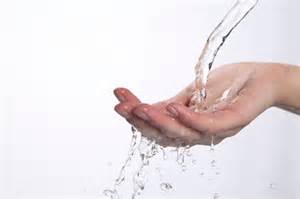
water.epa.gov
If you're on a public or municipal water line in the
United States, call your local water supplier (the number's on your water
bill). By law, the supplier must test its processed water regularly and
provide you with a copy of the results, called a Consumer Confidence Report,
annually as well as on demand.
Many water agencies across the country now make their annual water
quality reports available online. You can access these reports on the Environmental
Protection Agency's Web site.
If you contact your local
agency by phone, ask for a test of the water from your own faucets to find
out whether any contaminants are getting into the water between the
treatment plant and your drinking glass. Some suppliers will do this test
free of charge.
If your water supplier won't test your water, you'll
need to have the test done by a state-certified lab. To find one in your
area, call the Environmental Protection Agency's Safe Drinking Water hotline
at (800) 426-4791, go to the EPA's Web site for a list of state
certification offices, or look in the Yellow Pages under
"Laboratories — Testing."
Alternatively, you can use a nationwide testing service: Underwriters
Laboratories will
test your water for a variety of contaminants, from fecal bacteria to
industrial pollutants, and get the results to you in about a week. The price
depends on how many contaminants you want to test for: It can range from $30
for a simple mercury screen, to $500 for a 94-contaminant screen.
You can also test your water yourself, using a home test kit. These kits
can't test for everything, but they detect lead, arsenic, pesticides, and
bacteria. Two reputable ones are
PurTest and Discover
testing.
The kits sell for $10 to $30.
In any case, be sure to test what's called first-draw water — the stuff that
comes out of your faucet when you first turn on the tap in the morning. If
contaminants are leaching from the plumbing pipes into your water, the level
of contamination will be highest after the water has sat in the pipes
overnight.
Although the EPA says that more than 90 percent of water systems in this
country meet its water quality standards, several contaminants can make
their way into the water supply. These include arsenic, viruses and other
disease-causing organisms, chlorine by-products, industrial and agricultural
pollutants, and lead.
In
concentrations of more than 15 parts per billion (ppb), lead can be very
dangerous to infants and children, leading to delays in physical and mental
development, neurological disorders, kidney disease, and learning
disabilities. (Contaminants are measured by how many particles of the
substance are present in a billion particles of water — 15 ppb means 15
particles of lead in a billion particles of water.)
Have your water tested for lead if you have lead pipes or brass faucets
(which may contain lead), and for copper if you have copper pipes.
Lead solder could legally be used to join
plumbing pipes until 1986, but lead is a concern even if you live in a
brand-new home. Faucets and pipes are still allowed to contain as much as 8
percent lead and have been shown to leach the metal in significant amounts,
particularly when they're new.
top
What
Should You Do If Your Water is Contaminated?
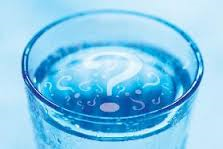
Once you have identified the problem, you can
take the appropriate steps to fix it:
- If the
problem is corroded pipes in your home, consider replacing
them.
- If your well is contaminated by bacteria,
you can have it disinfected or you can drill a deeper well.
-
If your water contains other contaminants - heavy metals, pesticides, volatile organic
chemicals, minerals, parasites or bacteria -
you should consider
installing a filtration system.
top
Solutions - Filtering Your Water
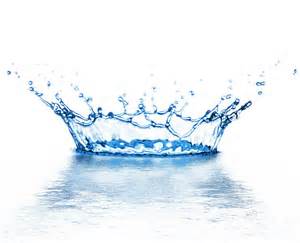
Reference -
www.nrdc.org
- © National Resources Defense Council
Selecting
the Right Filter:
Household
water filters generally fall into one of two categories: point-of-entry units,
which treat water before it gets distributed throughout the house; and
point-of-use units, which include countertop filters (e.g. filter pitchers),
faucet filters, and under-the-sink units. Some filters use more than one kind of
filtration technology.
As a general rule, look for
filters labeled as meeting NSF/ANSI
standard 53 and that are certified to remove the contaminant(s) of concern in
your water. While the NSF certification program is not flawless, it does
provide some assurance that at least some claims made by the manufacturer have
been verified. NSF-certified filters have been independently tested to show that
they can reduce levels of certain pollutants under specified conditions. Those
that meet standard 53 are geared toward treating water for health, not just for
aesthetic qualities.
top
Consumer Guide to Water Filters -
Types of Filters
Activated Carbon Filter
-
How it works: Positively charged and highly absorbent
carbon in the filter attracts and traps many impurities.
-
Used in: Countertop, faucet filters and under-the-sink
units.
-
Gets rid of: Bad tastes and odors, including
chlorine. Standard 53-certified filters also can substantially reduce many
hazardous contaminants, including heavy metals such as copper, lead and
mercury; disinfection byproducts; parasites such as Giardia and
Cryptosporidium; pesticides; radon; and volatile organic chemicals such as
methyl-tert-butyl ether (MTBE), dichlorobenzene and trichloroethylene (TCE).
Cation Exchange Softener
-
How it works: "Softens" hard water by
trading minerals with a strong positive charge for one with less of a
charge.
-
Used in: Whole-house, point-of-entry units.
-
Gets rid of: Calcium and magnesium, which form mineral
deposits in plumbing and fixtures, as well as barium and some other ions
that can create health hazards.
Distiller
-
How it works: Boils water and recondenses the purified
steam.
-
Used in: Countertop or whole house point-of-entry
units; can be combined with a carbon filter.
-
Gets rid of: Heavy metals such as cadmium,
chromium, copper, lead and mercury, as well as arsenic, barium, fluoride,
selenium and sodium.
Reverse Osmosis
-
How it works: A semi permeable membrane separates
impurities from water. (Note: This filtration technique wastes a substantial
amount of water during the treatment process.)
-
Used in: Under-the-sink units; often in combination
with a carbon filter or UV disinfection unit.
-
Gets rid of:
Most contaminants, including
certain parasites such as Cryptosporidium and Giardia; heavy
metals such as cadmium, copper, lead and mercury; and other pollutants,
including arsenic, barium, nitrate/nitrite, perchlorate and selenium.
Ultraviolet Disinfection
-
How it works: Ultraviolet light kills bacteria and other microorganisms.
-
Used in: Under-the-sink units, often in combination with a carbon filter
and sediment screen.
-
Gets rid of: Bacteria and parasites; class A systems protect
against harmful bacteria and viruses, including Cryptosporidium and Giardia,
while class B systems are designed to make non-disease-causing bacteria
inactive.
www.wqa.org
- Water Quality
Association
This resource provides a convenient, encyclopedic search mechanism for
individuals who want information on contaminants, water quality technologies,
applications, regulatory issues, etc.
- Find a Water Professional
- Diagnose Your Water
- Gold Seal Certified Products
- Water Information Library
- Informed Consumer
-
Consumer
Resources
Water
Filter Comparison Guide
www.waterfiltercomparisons.com
There are
several options available in the market when it comes to filtering your
drinking water. Options include under counter water filtration systems,
countertop water filtration, pitcher water filtration and faucet
attachments. Below, we have compiled important information for you to
consider when choosing a drinking water filter including a product by
product comparison, filter contaminant reduction capabilities, installation
requirements, and ongoing costs per gallon.
Search
for Certified Water Products
Check to see if your water filter is certified:
info.nsf.org - Search for
NSF Certified Drinking Water Treatment Units, Water Filters
www.wqa.org -
Search for WQA (Water Quality Association) Certified Product Listings can be
searched by a manufacturer's name or by scheme categories
top
10 Reasons to Use a Shower
Filter
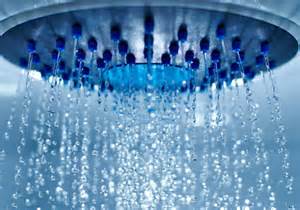
www.allaboutwater.org
- Copyright © All About Water.org
-
The EPA has
stated that every household in the United States has elevated levels of
chloroform in the air due to chlorine released from showering water.
-
Tap water often
contains at least as much, if not more, chlorine than is recommended for
use in swimming pools.
-
More chlorine enters
the body through dermal absorption and inhalation while showering than
through drinking tap water.
-
The chlorine in
showering water has harsh, drying effects on skin and hair.
-
Skin pores widen while
showering, making dermal absorption of chlorine and other chemicals
possible.
-
The chlorine in
showering water can cause rashes and other skin irritations when
absorbed by the skin.
-
Chemicals in showering
water vaporize at a much faster rate than the actual water. Thus, the
steam in a shower contains a much higher concentration of chemicals than
the water itself.
-
Inhaled chemicals make
their way into the bloodstream much more quickly than ingested
chemicals, without the added filtration benefits of digestion.
-
More water contaminants
are released into the air of a home from the shower than from any other
source.
-
Chlorine is a suspected
cause of breast cancer. Women suffering from breast cancer are all found
to have 50-60 percent more chlorine in their breast tissue than healthy
women.
top
Chlorine Cancer Risks
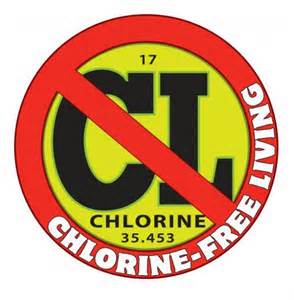
www.greenfacts.org
- pdf
Copyright © GreenFacts
Why
is there concern about water disinfectants?
Chlorine
has been used very widely to kill germs in drinking water and fight waterborne
disease. However chlorine reacts with natural material in the water to form a
range of disinfectant by-products (DBPs) of public health concern. Therefore,
alternative chemical disinfectants are increasingly being used, either alone, in
addition to chlorine, or in combination with one another. They include ozone (O3), chlorine dioxide (ClO2) and chloramines (NH2Cl).
However, each has been shown to form its own set of disinfectant by-products (DBPs).
There
is thus a need to better understand the health risks associated with each mode
of disinfection and to decrease the chemical risk without compromising the
microbiological safety of drinking water.
Are
there uncertainties in assessing exposure?
Toxicological
studies attempt to extrapolate the results of laboratory animal studies to
humans. This may lead to an estimation of risk factors for some health effects.
Epidemiological
studies attempt to link human health effects (e.g. cancer) to a cause (e.g.
exposure to a disinfectant by-product, DBP) and require exposure assessments.
Humans
can be exposed to chemical risks from disinfected drinking-water through several
routes:
-
ingestion
of disinfectant by-products (DBPs) in drinking-water;
-
ingestion
of drinking-water that has a residual of free chlorine at the tap and the
resulting formation of DBPs in the mouth and stomach (ozone cannot be
present at the tap and chloramines and chlorine dioxide do not react to form
by-products);
-
inhalation
of volatile DBPs during showering.
However,
it is generally assumed that the most significant route is the ingestion of DBPs.
Conclusion:
Animal studies indicate that none of the chlorination by-products studied to
date is a potent carcinogen at concentrations normally found in drinking water.
There is insufficient epidemiological evidence to conclude that drinking
chlorinated water causes cancers. The results of currently published studies do
not provide convincing evidence that chlorinated water or THMs cause adverse
pregnancy outcomes.
Nevertheless
it is prudent to take steps to minimise exposure to DBPs, where this can be
achieved without compromising disinfection. Strategies should focus on
eliminating organic impurities fostering DBP formation.
www.historyofwaterfilters.com - Copyright ©
Contaminants Resulting from Municipal Additives - Chlorine Byproducts - In
1972, chloroform, a particularly deadly poison, was detected in chlorinated
drinking water. This detection sparked numerous epidemiological studies. The
proponents of such studies intended to investigate the potential health
risks of drinking chlorinated water. As a result of these epidemiological
studies, scientists discovered a large number of chlorine byproducts found
within chlorinated drinking water. Chlorine, in addition to killing or
inactivating pathogens in water, reacts with natural organic matter and/or
the chemical compound bromide in water to produce various organic and
inorganic byproducts. These byproducts include bromate, chlorite, haloacetic
acids (HAA5), and total trihalomethanes
(TTHMs).
Many epidemiological studies indicated an association between ingestion of
chlorinated water and occurrences of bladder cancer and rectal cancer.
A
1991 report, a compilation of 12 different studies, indicated that 9% of
bladder cancer cases and 15% of rectal cancer cases in the United States
could be attributed to chlorinated water and chlorine byproducts (Xie,
2004). These numbers translate to 10,000 cases of cancer a year that can be
credited to chlorinated water!
Each of the four main chlorine byproducts contributes to increased cases of
bladder and rectal cancer, but some byproducts lead to other adverse health
effects, as well. Chlorite can cause anemia in infants and young children It
can also affect nervous system functioning in both children and adults.
TTHMs can cause nervous system problems, in addition to triggering kidney
and liver problems. There is a positive correlation between TTHMs in
drinking water and spontaneous abortion, as well (Xie, 2004).
The EPA has
set MCLs for chlorine byproducts in drinking water, but these chlorine
byproducts continue to be present, and, even in small amounts, they can lead
to damaging health problems.
www.globalhealingcenter.com
© Copyright 1998 - 2014 | All Rights Reserved
Chlorine and Breast Cancer:
Breast cancer, which now affects one in every eight women in North America,
has recently been linked to the accumulation of chlorine compounds in the
breast tissue. A study carried out in Hartford Connecticut, the first of
it’s kind in North America, found that;
“women with breast cancer have 50% to 60% higher levels of organochlorines
(chlorination byproducts) in their breast tissue than women without breast
cancer.”
top
Hazards of Chlorine in Shower
Water
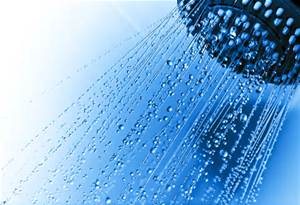
orthomolecular.org ©
(Riordan Clinic)
Taking a warm shower or lounging in a tub filled
with hot chlorinated water, one inhales chloroform. Researchers recorded
increases in chloroform concentration in bathers’ lungs of about 2.7 ppb
after a 10-minute shower. Worse, warm water
causes the skin to act like a sponge; and so one will absorb and inhale more
chlorine in a ten-minute shower than by drinking eight glasses of the same
water. This irritates the eyes, the sinuses, throat, skin and lungs,
dries the hair and scalp, worsening dandruff. It can also weaken immunity.
A window from the shower room open to the outdoors
would release chloroform from the shower room air,
but to prevent its
absorption through the skin requires a showerhead that removes chlorine.
www.life-enthusiast.com
Copyright © Life Enthusiast
The risks of chlorine exposure are serious– including, but not
limited to…
§
Irritation of the eyes, sinuses, throat, and skin
§
Aggravation of the lungs
§
Excessive free radical formation = accelerated aging
§
Hardened arteries
§
Difficulty metabolizing cholesterol
§
Higher vulnerability to genetic mutation
§
Development of cancer
In a recent
article in The American Journal of Public Health, chlorine was linked
to measurable increases in certain types of cancer. The article also
reported that up to 2/3 of our harmful exposure to chlorine is through
absorption by the skin during showering. Even if you can’t detect the
presence of chlorine in your water by its smell or taste, that doesn’t mean
you’re safe from the consequence of exposure. Chlorine exposure can be
especially harmful for individuals with sinus problems, allergies, skin
rashes, emphysema and asthma.
Inhaling Chloroform?
The most current findings from the U.S. Environmental Protection Agency
(EPA) indicate that virtually
every home in America has a detectable level of chloroform gas in the air. Chloroform
is a derivative of chlorine and formaldehyde, a known carcinogen.
Chlorine and showering are its source. Anyone who showers regularly should
be concerned about the dangers of chlorine exposure, but especially those
who suffer from dry and irritated skin; damaged and brittle hair; flaky or
itchy scalp; or redness and burning of the eyes.
Experts used to believe that ingestion was the
primary method of chlorine intake, but new studies show that inhalation and
skin exposure intake are even higher. One of the most prevalent forms of
chlorine taken in through inhalation is chloroform. Remember, chloroform is
a carcinogen, and it’s also linked to excessive free radical formation, cell
mutation, and the oxidation of cholesterol.
How to Protect Yourself from the Hazards of Chlorine
Obviously, avoiding showers altogether is not an option. There’s a far
better (and simpler) solution — and that is … to get the chlorine out of
your water. The best way to eliminate chlorine and its hazardous derivatives
from your water supply is to install
a shower filter.
top
Bottle
Water Health Risks Precautions
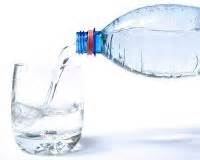
www.nrdc.org
-
© Natural Resources Defense Council
"NRDC (Natural Resources Defense Council) Policy Solutions"
There is no
evidence that bottled water is truly immune from Cryptosporidium or Giardia
unless it is fully protected and treated with EPA-CDC recognized best available
technologies, and much bottled water does not receive this treatment.
Indeed, internal industry communications highlight that IBWA is well aware that
some bottlers do not use these treatment technologies.
[241]
www.foodandwaterwatch.org
- © Food & Water Watch
Tap
water is regulated by the EPA as well as state and local governments,
but bottled water is only checked by the Food and Drug Administration. FDA doesn’t even get
to most food plants every year, with some plants going five or ten years between
inspections. Though the FDA is supposed to test bottled water at the same standards as the EPA, FDA guidelines are years behind the
EPA’s. Here are some of the more disturbing examples…
-
In 2009, almost 50
percent of all bottled water came from municipal tap water supplies.
-
According to a 2010 survey, only 3 companies
provide the public with the same level of information available for tap
water. This includes where the water came from, how it was treated and
what the results of the water quality tests were.
-
Independent testing of bottled water conducted
by the Environmental Working Group in 2008 found that 10 popular brands
of bottled water, purchased from grocery stores and other retailers in 9
states and the District of Columbia, contained 38 chemical pollutants,
with an average of 8 contaminants in each brand.
www.nrdc.org
-
© Natural Resources Defense Council
"NRDC (Natural Resources Defense
Council) Policy Solutions" -
This is the online
version of NRDC's March 1999 petition to the FDA and attached report on the results of our
four-year study of the bottled water industry, including its bacterial and
chemical contamination problems. The petition and report find major gaps in
bottled
water regulation and conclude that bottled water is not necessarily safer than
tap water. The online version contains all of the report's text, tables and
figures; it does not include the accompanying Technical Report or
additional attachments to the petition.
Misleading Bottled Water Labeling
and Marketing: In 1995, FDA issued "standards of identity" -- essentially
labeling rules, in response to a petition from the International Bottled Water
Association (IBWA). [230]
These rules were widely acclaimed as a breakthrough that would prohibit
misleading claims by unscrupulous water bottlers. While the rules do prohibit
some of the most egregiously deceptive labeling practices by bottlers, they have
by no means eliminated the problem.
Some Bottled Water Labels Remain
Misleading to Consumers: The Institute of Medicine, an arm of the National Academy of Sciences,
found in a 1992 study that deceptive bottled water labeling was a widespread
practice, with state authorities exasperated about FDA inaction in the face
of frequent statements and vignettes indicating or implying that the bottled
water was far purer than tap water or came from specific sources or had purity
levels that may not have been justified.
Many of these practices continue. For example, FDA rules allow bottlers
to call their product "spring water" -- which seems to carry cachet
with consumers as being especially natural and pure -- even though it may be
brought to the surface using a pumped well, and even though it may be treated
with chemicals. FDA merely requires that the geologic formation that is tapped by the
well must come to the surface somewhere, sometimes, to allow the water pumped to
the surface in a well to be called spring water. [232]
Bottled Water Marketing is Often
False or Misleading: Bottled water marketing seeks to emphasize the supposed purity of bottled
water, in many cases contrasting "pure" and "protected"
bottled water with "inconsistent" or unpredictable tap water quality.
In the words of a leading industry consultant, "Water bottlers are selling
a market perception that water is 'pure and good for you'...." [235]
This effort to create a "market perception" of purity is an
advertising mandate for the industry, notwithstanding the fact that just
because water comes from a bottle does not mean that it is any purer than tap
water, as we have seen in previous chapters. Among the common industry
claims about bottled water that are of questionable veracity or that are clearly
incorrect are:
Bottled water contains "no" chlorine or harmful
chemicals.
This
claim is boldly featured on IBWA fact sheets and its Web site. [236]
It clearly is false, as previous chapters have shown…
Imported bottled water must meet all U.S. rules.
IBWA
states that "any bottled water sold in the United States must meet all of
the same regulations as domestically produced water." [242]
But what is not mentioned is that FDA's Good Manufacturing Practices, source
approval, and source-water-testing requirements apply at the source or bottling
facility and are impossible for FDA to enforce when such facilities are outside
of the United States. FDA does not conduct any foreign inspections of bottlers,
so the degree to which foreign bottlers comply with these FDA rules is not
known. What is clear, however, is that these FDA rules do not apply equally
to foreign bottlers.
To read in entirety…
www.nrdc.org
Reference - www.commondreams.org
Copyrighted
While the Environmental Protection Agency (EPA) regulates
the quality of public water supplies, the agency has no authority over bottled
water. Bottled water that crosses state lines is considered a food product and
is overseen by the Food and Drug Administration (FDA), which does mandate that
it be bottled in sanitary conditions using food-grade equipment. According to
the influential International Bottled Water Association (IBWA), "By law,
the FDA Standard of Quality for bottled water must be as stringent as the EPA's
standards for public drinking water."
However, the FDA is allowed to interpret the EPA's
regulations and apply them selectively to bottled water. As Senior Attorney Erik
Olson of the NRDC explains, "Although the FDA has adopted some of the EPA's
regulatory standards, it has decided not to adopt others and has not even ruled
on some points after several years of inaction." In a 1999 report, the NRDC
concludes that bottled water quality is probably not inferior to average tap
water, but Olson (the report's principal author) says that gaps in the
weak regulatory framework may allow careless or unscrupulous bottlers to market
substandard products. He says that may be of particular concern to those with
compromised immune systems.
The IBWA urges consumers to trust bottled water in part
because the FDA requires water sources to be "inspected, sampled, analyzed
and approved." However, the NRDC argues that the FDA provides no specific
requirements-such as proximity to industrial facilities, underground storage
tanks or dumps-for bottled water sources…
According to Olson,
the FDA has no official procedure for rejecting
bottled water sources once they become contaminated. He also says a 1990
government audit revealed that 25 percent of water bottlers had no record of
source approval.
Further, in contrast to the EPA, which employs
hundreds of staffers to protect the nation's tap water systems, the FDA
doesn't have even one full-time regulator in charge
of bottled water. But generally
speaking, anything that doesn't say "source" or "spring" on
the label is just fancy tap water.
top
The
Threat of Plastic Water Bottles

www.greencleancertified.com
© Green Clean Certified
Consumers who drink water (or ingest any food) contained in
certain hard and soft plastic bottles can expose themselves to health risks
associated with chemicals in the plastic. The culprit? Phthalates.
The older the plastic, the higher the risks may be.
Consumers may be wise to check the bottle’s expiration date before drinking
the water contained within. To read
more…www.greencleancertified.com
Link to Non
Toxic Living for Additional Information Threats of BPA Plastic Containers
top
Bottle
Water Certifications
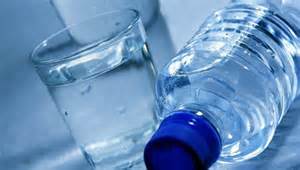
Reference -
www.epa.gov
– Environmental Protection Agency
The International Bottled Water
Association
(IBWA)
is a
trade organization for water bottlers. IBWA
members must meet the organization’s “model code” and are subject to
annual inspections by an independent third party.
Bottlers
belonging to IBWA frequently indicate membership on their labels.
NSF International -
Bottled water certified by NSF undergoes additional testing by unannounced
annual plant inspections. NSF certifications mean that the bottler complies with
all applicable FDA requirements, including good manufacturing practices.
NSF Certification:
Testing
program provides for annual unannounced plant inspections covering every aspect
of a bottler's operation, from the source of the water, through the disinfection
and treatment process, and including the container closure process. We also
perform extensive product testing for over 160 chemical, inorganic,
radiological, and microbiological contaminants.
The NSF Bottled Water Certification Program is an annual, voluntary
certification process that includes both extensive product evaluations as
well as on-site audits of bottling facilities.
top
Benefits
of NSF Certification for Consumers
Reference -
www.nsf.org
- NSF International
No other independent testing programs require companies to
comply with the strict standards imposed by NSF and its product certification
programs. From extensive product testing and material analyses to unannounced
plant inspections, NSF is the only third-party testing organization to undertake
a complete evaluation of every aspect of a product's development before it can
earn our certification.
Most importantly for you, NSF Certification is not a one-time activity. We
do not just test a single model of a product and give it our okay. Our
certification programs require regular on-site inspections of the manufacturing
facilities. In addition, certified products are periodically re-tested against
the requirements of the most current version of the applicable national
standard. If for any reason a product fails to meet one or more of our
certification criteria, we will take whatever enforcement actions we deem
necessary to protect the public, including product recall, public notification,
or de-certification.
top
Search for Certified Bottled
Water
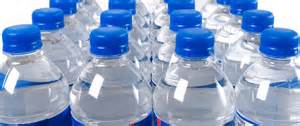
www.nsf.org
Check to see if your favorite bottled
water is certified (you’ll be surprised and probably disappointed)
info.nsf.org - Search for
NSF Certified Bottled Waters & Natural Mineral Waters, Beverages, Packaged
Ice, and Caps & Containers
Other Resources:
•
Environmental
Protection Agency (EPA): phone 202-260-5543. Safe Drinking Water
Hotline: 800-426-4791.
•
NSF
International: phone toll-free in U.S., 800-NSF-MARK; otherwise
734-769-8010. For questions on consumer products, call 877-867-3435. To get The
Consumer's Guide to Safe Drinking Water, which lists the water-treatment
units tested by NSF and the contaminants they remove, send $7 to NSF
Inter-national, Consumer Affairs Office, P.O. Box 130140, 789 N. Dixboro Road,
Ann Arbor, MI 48113-0140.
•
Natural
Resources Defense Council: phone 212-727-2700.
top
When and When Not to Boil Water
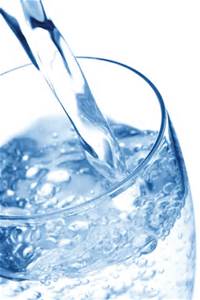
www.epa.gov/safewater - Water on Tap What You Need to Know
Boil Water Notices
for Microbial Contaminants: When
microorganisms such as those that indicate fecal contamination are found in
drinking water, water suppliers are required to issue “Boil Water Notices.”
Boiling
water for one minute kills the microorganisms that cause disease. Therefore,
these notices serve as a precaution to the public.
Nitrates:
Do
NOT boil water to attempt to reduce nitrates.
Boiling water contaminated
with nitrates increases its concentration and potential risk. If you are
concerned about nitrates, talk to your health care provider about alternatives
to boiling water for baby formula.
Lead:
Do NOT boil water to
attempt to reduce lead. Boiling water increases lead concentration.
Always
use water from the cold tap for preparing baby formula, cooking, and drinking.
Flush pipes first by running the water before using it. Allow the water to
run until it’s cold. If you have high lead levels in your tap water, talk
to your health care provider about alternatives to using boiled water in baby
formula.
top
Emergency
Disinfection of Drinking Water
www.epa.gov
Boiling is the surest method to make water safe to
drink and kill disease-causing microorganisms like
Giardia
lamblia and Cryptosporidium,
which are frequently found in rivers and lakes.
These disease-causing organisms are less likely to occur in well water (as long
as it has not been affected by flood waters). If not treated
properly and neutralized, Giardia may cause diarrhea, fatigue, and
cramps after ingestion. Cryptosporidium is highly resistant to
disinfection. It may cause diarrhea, nausea and/or stomach cramps. People with
severely weakened immune systems are likely to have more severe and more
persistent symptoms than healthy individuals. Boil filtered and settled water
vigorously for one minute (at altitudes above one mile, boil for three minutes).
To improve the flat taste of boiled water, aerate it by pouring it back and
forth from one container to another and allow it to stand for a few hours, or
add a pinch of salt for each quart or liter of water boiled.
If boiling is not possible,
chemical disinfection of filtered and settled water collected from a well,
spring, river, or other surface water body will still provide some health
benefits and is better than no treatment at all.
Chemical Treatment
When boiling is
not practical, certain chemicals will kill most harmful or disease-causing
organisms.
For chemical disinfection to be effective, the water must be filtered and
settled first. Chlorine and iodine are the two chemicals commonly used to treat
water. They are somewhat effective in protecting against exposure to Giardia,
but may not be effective in controlling more resistant organisms like
Cryptosporidium.
Chlorine is generally more effective than iodine in controlling Giardia,
and both disinfectants work much better in warm water.
You can use a non-scented, household chlorine
bleach that contains a chlorine compound to disinfect water.
Do not use
non-chlorine bleach to disinfect water. Typically, household chlorine
bleaches will be 5.25% available chlorine. Follow the procedure written on
the label. When the necessary procedure is not given, find the percentage of
available chlorine on the label and use the information in the following table
as a guide. (Remember, 1/8 teaspoon and 8 drops are about the same quantity.)
|
Available
Chlorine
|
Drops
per Quart/Gallon of Clear Water
|
Drops
per Liter of Clear Water
|
|
1%
|
10 per
Quart - 40 per Gallon
|
10 per
Liter
|
|
4-6%
|
2 per Quart
- 8 per Gallon (1/8 teaspoon)
|
2 per Liter
|
|
7-10%
|
1 per Quart
- 4 per Gallon
|
1 per Liter
|
(If the strength of the bleach is unknown, add ten drops
per quart or liter of filtered and settled water. Double the amount of chlorine
for cloudy, murky or colored water or water that is extremely cold.)
Mix the treated water thoroughly and allow it to stand,
preferably covered, for 30 minutes. The water should have a slight chlorine
odor. If not, repeat the dosage and allow the water to stand for an additional
15 minutes. If the treated water has too strong a chlorine taste, allow the
water to stand exposed to the air for a few hours or pour it from one clean
container to another several times.
You can use granular calcium hypochlorite to disinfect water.
Add and dissolve one heaping teaspoon of high-test granular calcium
hypochlorite (approximately ¼ ounce) for each two gallons of water, or 5
milliliters (approximately 7 grams) per 7.5 liters of water. The mixture will
produce a stock chlorine solution of approximately 500 milligrams per liter,
since the calcium hypochlorite has available chlorine equal to 70 percent of its
weight. To disinfect water, add the chlorine solution in the ratio of one part
of chlorine solution to each 100 parts of water to be treated. This is roughly
equal to adding 1 pint (16 ounces) of stock chlorine to each 12.5 gallons of
water or (approximately ½ liter to 50 liters of water) to be disinfected. To
remove any objectionable chlorine odor, aerate the disinfected water by pouring
it back and forth from one clean container to another.
You can use chlorine tablets to disinfect filtered
and settled water.
Chlorine tablets containing the necessary dosage for drinking water disinfection
can be purchased in a commercially prepared form. These tablets are available
from drug and sporting goods stores and should be used as stated in the
instructions. When instructions are not available, use one tablet for each quart
or liter of water to be purified.
You can use tincture of iodine to disinfect
filtered and settled water.
Common household iodine from the medicine chest or first aid kit may be used to
disinfect water. Add five drops of 2 percent U.S. or your country’s approved
Pharmacopeia tincture of iodine to each quart or liter of clear water. For
cloudy water add ten drops and let the solution stand for at least 30 minutes.
You can use iodine tablets to disinfect filtered
and settled water.
Purchase commercially prepared iodine tablets containing the necessary dosage
for drinking water disinfection at drug and sporting goods stores. Use as stated
in instructions. When instructions are not available, use one tablet for each
quart or liter of filtered and settled water to be purified.
ONLY USE WATER THAT HAS
BEEN PROPERLY DISINFECTED FOR DRINKING, COOKING, MAKING ANY PREPARED DRINK, OR
FOR BRUSHING TEETH.
wwwnc.cdc.gov
Travelers who are camping, hiking, or staying in
remote areas may need to disinfect their drinking water. Several methods can
be used:
Solar Radiation: In
an emergency situation, water can be disinfected with sunlight. Water in a
clear plastic bottle, preferably lying on a reflective surface (such as
aluminum foil), will be safe to drink after a minimum of 6 hours in bright
sunlight. This technique does not work on cloudy water.
Heat: Most germs die
quickly at high temperatures. Water that has been boiled for 1 minute is
safe to drink after it has cooled. If no other method of water disinfection
is available, very hot tap water may be safe to
drink if it has been in the tank for a
while.
Filtering: A variety
of filters are available from camping stores. Most have filter sizes between
0.1 and 0.4 microns, which will remove bacteria
from water but will not remove viruses. New “hollow fiber” technology
can remove viruses as well. “Reverse osmosis” filters remove bacteria and
viruses and can also remove salt from water, which is important for ocean
voyagers.
Ultraviolet (UV) Light:
Portable units that deliver a measured dose of UV light are an effective way
to disinfect small quantities of clear water. However, this technique is
less effective in cloudy water since germs may be shielded from the light by
small particles.
top
| 